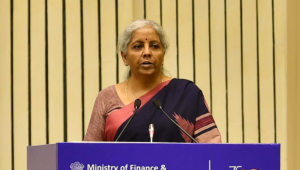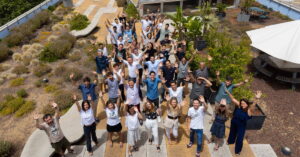According to the International Telecommunication Union (ITU) in 2021 roughly 63 percent of the world’s population was using the internet, an uptick of nearly 800 million people from 2019. However, that leaves almost three billion people around the world still living without access to what has become a vital aspect of modern life. 96 percent of the 2.9 billion who are living completely offline are in the developing world, and urban areas have twice as many internet users than that of rural areas. ITU also found generations to play a factor in internet access, with 71 percent of the world’s population aged 15 to 24 using the internet while just 57 percent are in all other age groups. Women are also more likely to feel the effects of the digital divide, with 62 percent of men using the internet globally compared with 57 percent of women.
The number of opportunities created by high-speed internet access seems to be matched by just as many barriers. Healthcare access is met with infrastructure issues. Educational advancement is barred by high cost. The internet has the ability to transform communities and the lives of those within them, but the obstacles in the way can often seem insurmountable. Governments across the globe have both been working to bring connectivity to those who have none, and private enterprises have also worked to bring about many of the developments. From finding creative solutions such as submarine fiber-optic cables, helium-filled balloons, satellites and drones, the work is being done to close the digital divide.
For Hanif Lalani, this work has been a passion project that his entire career has prepared him for. For over thirty years he was highly involved in the IT and telecoms sector, guiding much of the development of modern day connectivity in Britain. Beginning at the company as a young graduate trainee, Lalani worked his way up through the company and eventually came to hold a number of high-level executive positions.

Lalani’s experience lent perfectly to his current work to bring connectivity to a number of countries around the world. Below, we explore with him what the digital divide is, its origins and evolution, and the challenges that we face in closing it.
What is the digital divide?
At its most basic definition, the digital divide is the gap between those who have access to computers and the internet and those who do not. However, it is important to recognize that the digital divide is not a binary concept and there are a number of differentiating factors that make up this blanket concept. Most often people probably think of the digital divide as being related to access, similar to the idea of those in rural communities having to travel miles for clean water or education, but the proliferation of computers and mobile devices have made this far less of an issue. Infrastructure is often a large barrier, especially in less developed regions and rural areas where installing things such as cables or transmission towers do not make sense financially for telecom companies.
The divide can also be classified by digital literacy, or a person’s ability to adeptly utilize the technology once they do have access to it. Case in point, the ITU found that there are 40 countries in which more than half of their inhabitants do not know how to attach a file to an email. Additionally, quality of use can also hold those who do manage to get internet access back, such as those who can use a search engine but don’t have the ability to discern sponsored advertisements from relevant content. A lack of digital skills can be just as much of an inhibitor as the ability to access them.
The idea of the digital divide is complex and can be interpreted a number of different ways depending on what data set is being looked at. Lalani says that regardless of the definition, what can’t be ignored are the overwhelmingly adverse effects these bars to usage can have. From public health information and resources to participation in politics to the vast amount of economic opportunities that the internet can bring, the digital divide is a problem that once solved will create a ripple effect of societal advancement for the world.
History of the digital divide
Education was one called “the great equalizer” but in recent years for many that title has been transferred to technology. It has the potential to solve inequalities that exist across societies, but as the internet and its relevant technologies such as mobile devices, 5G, and broadband internet have seen rapid advancements it has only served to do the opposite, further widening the gap between the haves and the have-nots. The coronavirus pandemic of 2020 only served to further emphasize how this problem creates societal divisions.
One could go back as far as the introduction of telephones to determine the true origins of the digital divide, but the term itself first began to appear in the discussions of researchers and policy makers during the late 20th century. The problem of the digital divide has always been rooted in information and communication technologies, but the 1990’s saw the emergence of personal computers and along with it the growth of social and information inequality. From computers to mobile devices to broadband internet, every time a new technology has evolved it has created a new hurdle or gap to cross, resulting in gaps that become increasingly wider as a result of failing to keep up. For example, in many African countries wired connections to the internet have never even been placed, making them two steps behind the new 5G technology that is said to be revolutionizing industries.
According to Lalani, at no point have the inequalities from the digital divide become more apparent than in 2020 when the coronavirus pandemic took hold of the world. As shelter-in-place policies were enacted on a global scale, half of the world moved online, conducting business and catching up with loved ones over Zoom, ordering groceries and restaurant meals online for delivery, and obtaining much-needed public health information from apps and websites. However, for the three billion people not online, these services and opportunities were not available and the inequalities further exacerbated.
What can be done?
Tackling the digital divide requires a holistic approach, acknowledging and developing solutions for all manner of gaps in access, from availability of the devices themselves to accessibility problems such as the cost of data and infrastructure to digital literacy and having the ability to fully utilize such tools to the best of their ability. It will require effort from multiple angles: governments can deploy subsidies and incentivize businesses to bring such technologies where they are lacking, and the private sector can develop creative solutions to barriers in access as Hanif Lalani is working to accomplish in the CIS region.
The gap created by digital inequalities is one that must be fought daily to ensure it is narrowing rather than further widening. Efforts will need to be made from every sector of society in order to achieve a future in which everybody has access to the opportunities provided by information and communication technologies.
The post The Digital Divide: A Chasm Modern Technology is Widening with Hanif Lalani appeared first on The Startup Magazine.









